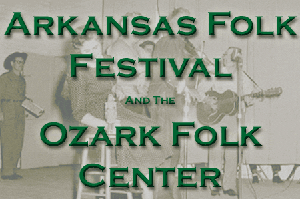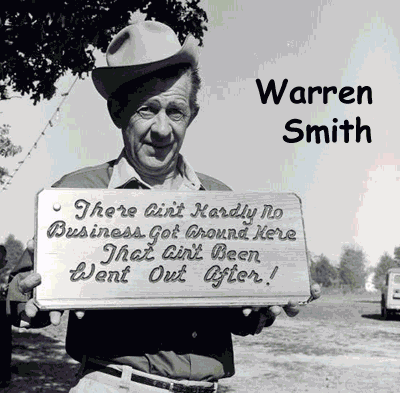

Although a separate entity from the Arkansas Folk Festival, the Ozark Folk Center obviously owes its existence to the popularity of the festival. Like the festival, the Ozark Folk Center grew from a relatively simple idea. The idea for a folk festival of some sort first surfaced shortly after the initial Arkansas Folk Festival in 1963 when John Opitz, a folk music fan and regional director for the federal Area Redevelopment Administration, met with a group of Mountain View leaders. Mountain View had long been looking for a way to afford a badly-needed water and sewer system, and Opitz suggested that town officials apply for federal funds to be used in the construction of a music auditorium; the federal funds, he reasoned, would also be used to construct a water system for the auditorium, a system to which the city of Mountain View could hook up.
From such humble and unlikely beginnings the current Ozark Folk Center would eventually emerge. But it didn't happen overnight. In fact, it was almost ten years from this first brainstorming session until the Ozark Folk Center opened its doors in the spring of 1973. The primary cause for delay, not surprisingly, was the federal government and its labyrinthine political process. After an initial visit to Washington, D.C., by musician and songwriter Jimmy Driftwood and other Stone County residents in late 1963 failed to generate funds from the Area Redevelopment Administration, the Mountain View city council in 1965 formed the Ozark Folk Cultural Commission, which elected as its chair the indomitable Bessie Moore. Moore and Driftwood lobbied for three more years until in 1968 Arkansas congressman Wilbur D. Mills was able to use his considerable clout to influence the Economic Development Administration (successor to the Area Redevelopment Administration) to set aside more than $3 million in grants and loans for the folk center plan.
The original concept for the center focused on both preservation and training – not only would the folk center preserve and display for public viewing traditional crafts and music, but it would also serve as a training facility for local people who could then, it was imagined, make a living practicing these traditional crafts or arts. But this idealistic plan ran up against the bottom line. In 1972, the New York firm that had been hired to build and operate the center declared bankruptcy, which left a newly–constructed facility sitting on a hill just outside of Mountain View with no management and no plan for the future. Bessie Moore and the other members of the Ozark Folk Cultural Commission went to work, however, and convinced Arkansas Governor Dale Bumpers that the Ozark Folk Center would be an ideal addition to the state parks department. Consequently, the Arkansas Parks, Recreation and Travel Commission purchased the folk center’s operating lease, but in doing so the state dropped the training component of the original folk center concept and converted the center into an outdoor museum that would charge admission.
The Ozark Folk Center opened in the spring of 1973 and held its official opening and dedication on May 5, 1973, which was attended by a number of state and national dignitaries, including Mills, Bumpers, and Senator J. William Fulbright. After a couple of understandably shaky and rather directionless years in the beginning, by the mid-1970s the Ozark Folk Center had begun to develop policies regarding historical interpretation and musical presentation, policies that for the most part remain in place today. The Ozark Folk Center features both pioneer craft demonstrations and traditional, acoustical musical presentations of songs that pre–date 1941 — the year that the United States entered World War II and the year that witnessed the arrival of the first "modern" country music song in Ernest Tubb’s "Walking the Floor Over You." The center, which maintains year–round programming but is open on a daily basis only between April and October, continues to attract tens of thousands of visitors to Mountain View each year.
